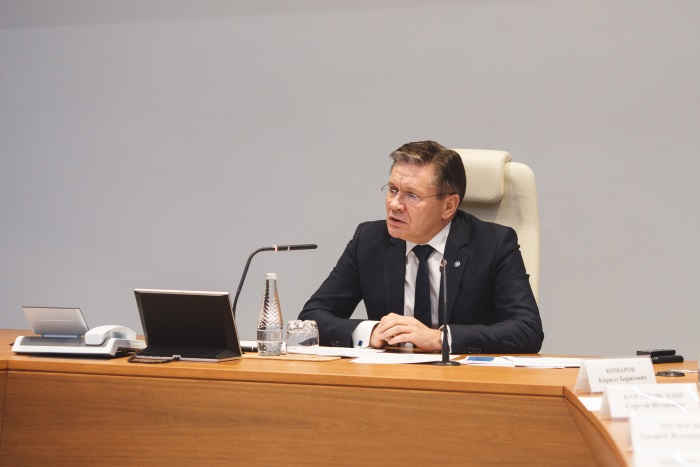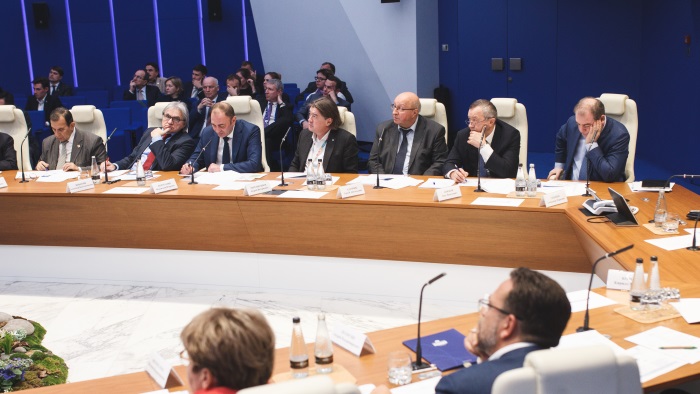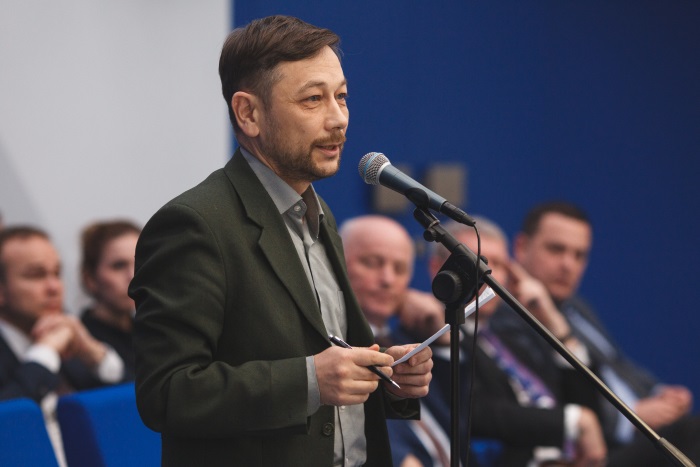On November 12, the ROSATOM’s Headquarters’ hosted an off-scheduled meeting of the Public Council of ROSATOM and all leading environmental organizations of Russia.
Director General of ROSATOM Alexey Likhachev, first deputy directors general of ROSATOM Aleksandr Lokshin and Kirill Komarov also took part in the meeting of the Public Council.

The meeting was initiated by the management of ROSATOM to discuss concerns of a number of non-governmental organizations with management of depleted uranium hexafluoride (DUHF) at ROSATOM’s enterprises.
Opening the meeting, Alexey Likhachev noted: “ROSATOM is ready to broadly discuss the DUHF topic with environmentalists. This discussion should take account of three aspects. The first is technological one since ROSATOM is a world leader in many parameters and many countries just copy our technological solutions, including in the uranium product enrichment area. Economic aspect. And the most important aspect for us: ecology. I believe we can be proud of a whole number of technological solutions conditioned by the absolute ecological responsibility of ROSATOM and transparency.”
Vyacheslav Korogodin, Director for Life Cycle of Nuclear Fuel Cycle and NPP Management of ROSATOM, delivered the speech “Nuclear power of 21st century and its feed supply”. He described in detail the sources of feed for the Russian nuclear power and important role of DUHF in production of nuclear fuel. According to Korogodin, the secondary sources of uranium feed are valuable strategic resource for the world nuclear power in the upcoming 50 years.

“ROSATOM is actively develops and effectively implements technologies which ensure implementation of the responsible environmental policy oriented for maximum use of the potential of mined natural resources without increasing in deposit exploration,” Vyacheslav Korogodin stressed.
President of JSC TVEL Natalia Nikipelova presented the ROSATOM program for safe DUHF management to the meeting participants. In her presentation, she presented technologies of uranium and DUHF reprocessing, conditions for safe storage of this material. She stressed that DUHF is a valuable feed for nuclear power. Separately, the attention was paid to the project on defluorination of DUHF, commissioning of special installations for DUHF rendering safe (bringing it into inert (chemically low-active) non-volatile and non-soluble oxide form – depleted uranium oxide) in the enterprises of ROSATOM’s Fuel Company ‘TVEL’. The program goal is to proceed from accumulation to planned decrease and complete elimination of existing DUHF stocks. Specialists think that already in 2024, after the second defluorination plant has been commissioned (now the first plant operates at JSC ECP in Zelenogorsk) the increase in DUHF stocks would stop and decrease in DUHF stocks would begin from 2027.

Representatives of the Public Council and invited environmental organizations asked their questions to ROSATOM’s representatives. In particular, Head of the Energy Program of the Greenpeace Russian Branch Vladimir Churov thanked on behalf of the organization the organizers for the invitation and stressed that he “welcomes the openness and the opportunity to speak about this topic” and asked a number of questions associated with safety of DUHF storage and supplies of depleted uranium from Urenco (Germany). JSC TENEX, JSC TVEL and ROSATOM’s representatives gave answers to all questions of interest. Representatives of other environmental organizations, including Ecological Legal Center ‘Bellona’, received answers to their questions.
Following the results of the discussion, the Head of ROSATOM tasked to send routinely all answers to accumulated questions of environmental organizations and, if necessary, to organize technical tours to view DUHF storage and management sites as well as to hold in December a meeting of the working group with participation of representatives of environmental organizations. According to Likhachev, there is an opportunity to consider in more detail the possibilities of the DUHF safe management program as regards attraction of additional resources for its implementation and expedite proceeding.
